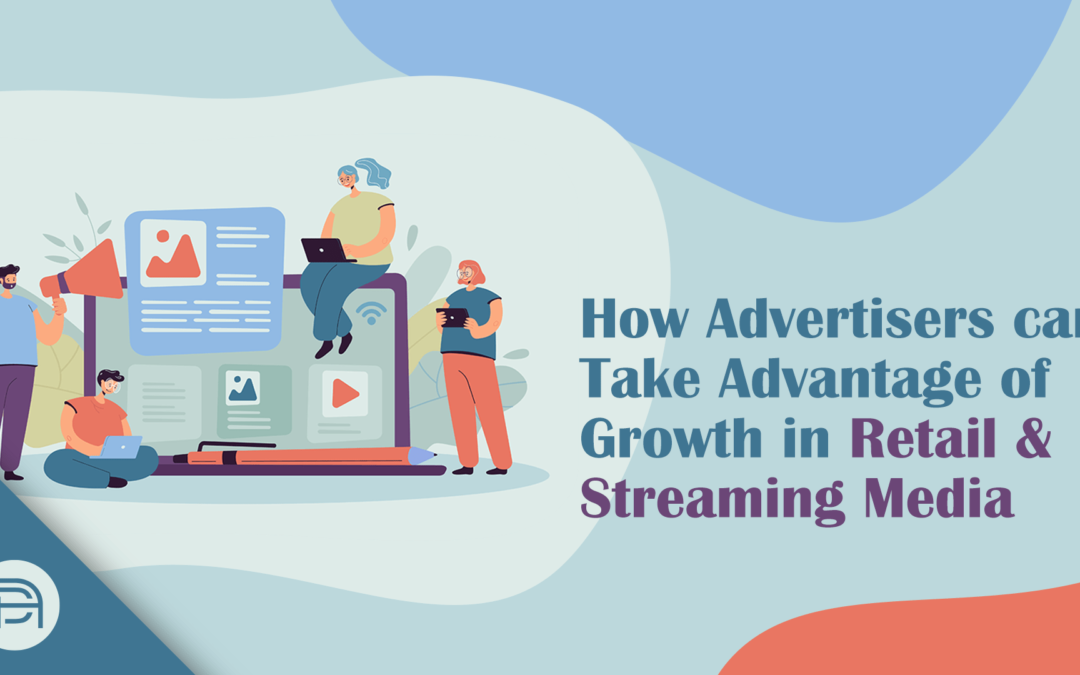OTT streaming and eCommerce have experienced record growth this past year, and now retailers and OTT services are looking for ways to monetize through their ad products. Historically, Amazon has owned much of both retail and streaming media market share with their DSP and FireTV products. Still, other major retailers and OTT services such as Walmart and Roku have recently announced partnerships to become more competitive in the space. These ad products have unique capabilities that will help advertisers reach and engage their target audience in more effective ways. Still, they will also create new challenges for advertisers to navigate.
Advantages of retail and streaming media for advertisers
With anything new, there will be early adopters and those who wait before jumping in. Advertisers who decide to try retail and streaming media early will have a first-mover advantage. In media, this usually means lower inventory costs compared to more mature advertising platforms since there will be less auction competition. For advertisers without large budgets, being an early adopter is even more critical. It allows them to make relatively inexpensive gains in their market share before their larger competitors come in and inflate the overall value of the inventory.
Robust data adds additional value to advertisers seeking to use retail and streaming media. Retailers and OTT services have a wealth of first-party shopping or consumption data otherwise inaccessible from other ad platforms. In other words, advertisers can only use the data from each specific retailer or OTT service on their ad products. For example, Amazon has data on what particular products a user views or purchases on Amazon. Their DSP is the only place an advertiser can activate media spend using this data. This exclusive data provides advertisers with a compelling reason to utilize these DSPs and gives them an effective value ad over other platforms that rely only on 3P data targeting.
Upcoming privacy updates will make data more difficult to collect; however, data compiled by retailers and OTT services will be minimal since most of their data doesn’t rely on 3rd party tracking pixels. Most digital ad platforms use tracking pixels to gather the majority of their data from browser behavior. Once the transition to a cookieless web environment happens, it will make data collection through pixels incomplete and unreliable. For this reason, ad platforms with access to first-party data, such as retailers or OTT services, will provide sustainable insights into consumer behavior as the media landscape shifts towards more strict privacy standards.
Retail and streaming media inherently have unique measurement capabilities, benefitting advertisers who have more niche business goals. Using retail as an example, CPG brands that rely on wholesale retailers to generate a portion of their sales have historically had difficulty attributing the impact media has on off-property sales. By using the ad products owned by each specific retailer, advertisers can gain a greater level of insight and measurement. For example, Walmart’s new customized Trade Desk DSP will include the ability for advertisers to attribute media spend to both on-site and in-store purchases made at Walmart. Similarly, an AVOD or SVOD service can use an ad platform like Roku to generate installs of their app on Roku devices, which isn’t possible to measure through any other ad platform. This kind of measurement is a game-changer for advertisers who rely on retail or OTT as a significant part of their business model.
The retail and streaming media challenges for advertisers
Fragmentation and more walled gardens are two of the challenges advertisers will have to navigate in the world of retail and streaming media. Anytime more ad platforms join the media ecosystem, measuring omnichannel performance becomes increasingly difficult. Even with the best cross-channel attribution model, there will still be gaps in omnichannel measurement since all of these new walled gardens will want to protect their data. Because of this, advertisers will need to understand how each of these ad platforms helps them achieve their business goals to determine the investment level for each media channel.
What can advertisers do now?
Many ad products, such as Amazon and Roku, are currently available to most advertisers. A handful of others, such as Hulu and Walmart’s ad products, are slowly being rolled out to more advertisers. As eCommerce and OTT streaming continue to become more popular among the general public, advertisers who are first movers to the retail and streaming media space will have unique opportunities to meet consumers where they are before their competition does. Retail and streaming media are just getting started. It will be the forward-looking advertisers and agencies who can take the most significant advantage of retail and streaming media’s unique capabilities.
Trevor Clune, Senior Analyst, Digital Media
For more information on eCommerce and OTT, please reach out to [email protected].


